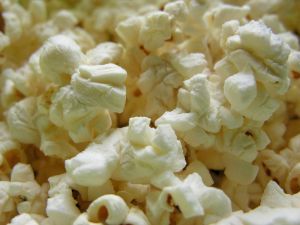When most people think of homegrown corn their mouth waters for the sugary white and yellow kernels found on cobs of sweet corn. While this is easily the most popular variety for personal vegetable gardens there is more to corn than Zea saccharata. Some varieties have different textures, starch-content, color, and of course flavor. While sweet corn is the type that is used for eating off the cob, other varieties are great for grounding into flour, for popping as popcorn, for feeding to animals, or even using as decoration. Learn to grow different corn varieties with these tips on growing corn.
How to Grow Corn
To grow your regular sweet corn garden varieties you will need nitrogen-rich soil. Ideally, plant corn where beans or peas were grown the previous year – these vegetables will increase the soil’s nitrogen content. If you haven’t practiced vegetable crop rotation , you can still grow delicious corn. Add organic compost or aged manure and mix into the soil before planting.
This crop does require adequate space. Seeds can be planted 12 inches apart, but there should be about 36 inches in between each row. Plant two or three seeds together, thinning to the strongest plant. One thing to keep in mind when planting your corn is that this vegetable is wind-pollinated; one species can cross-pollinate with another. If planting more than one corn variety at once, be sure to keep sweeter varieties separate. Also, to promote desirable cross-pollination between each plant, form a block of properly spaced plants, rather than one long row.
Once the seeds are in the ground water the soil well. Plenty of water is important for germination, more so for sweeter varieties. Water well every couple days when there is no rain. Add fertilizer once the plants are one foot tall. Harvesting time varies with different corn varieties.
From Sweet to Decorative
What are the different options for gardeners interested in growing corn?
Zea saccharata and Zea rugosa – Sweet corn, which can be yellow, white, or both. This is the summer time treat that is eaten off the cob. When harvesting, once you pull the ears try and cook as soon as possible. Some of the best sweet corn varieties to grow include:
- Seneca Horizon, delicious, high-quality yellow kernels, grow in 65 days
- Sundance, also yellow kernels, cold-tolerant, can be planted in early spring
- Silver Queen, with sweet white kernels, high-quality variety that is resistant to bacteria, grows in 92 days
- Butter and Sugar is a popular bicolor sweet variety
- Sugar and Gold is a bicolor corn that is excellent for cooler season growing
- Merlin, extra sweet yellow kernels, good disease tolerance, and huge ears reaching nine inches
- Divinity is a very sweet white variety that tolerates drought-like conditions
- Honey ‘N Pear, choose for extreme sweetness, this bicolor variety won the All-America Selection title in 1988
Zea mays indentata – Also known as dent corn, this is a crop used for livestock feed and processed foods. The kernels are very hard, and not ideal for regular eating.
Zea mays indurata – Flint corn kernels have a very hard outer shell. They come in colors such as white, red, browns, and even black. Grow this variety for decorative corn. It can also be soaked and softened to make hominy, and ground to make corn dishes. Zea mays amylacea – This is the corn variety for making corn flour. The kernels are soft and starchy. Flour corn is usually white or blue. Varieties to try for making flour or drying for decoration include:
- Blue Hopi, for blue kernels, great for grounding into blue corn flour
- Bloody Butcher corn has red kernels, can be used for decorative corn if dried, or ground into a flour
- Broom Corn is a bicolor variety with brown, deep red, and amber kernels.
Zea mays everta – Grow popcorn! This type of corn is similar to flint with a hard outer shell and a soft, starchy middle. Try Lady Finger, South American Yellow, and Strawberry.





